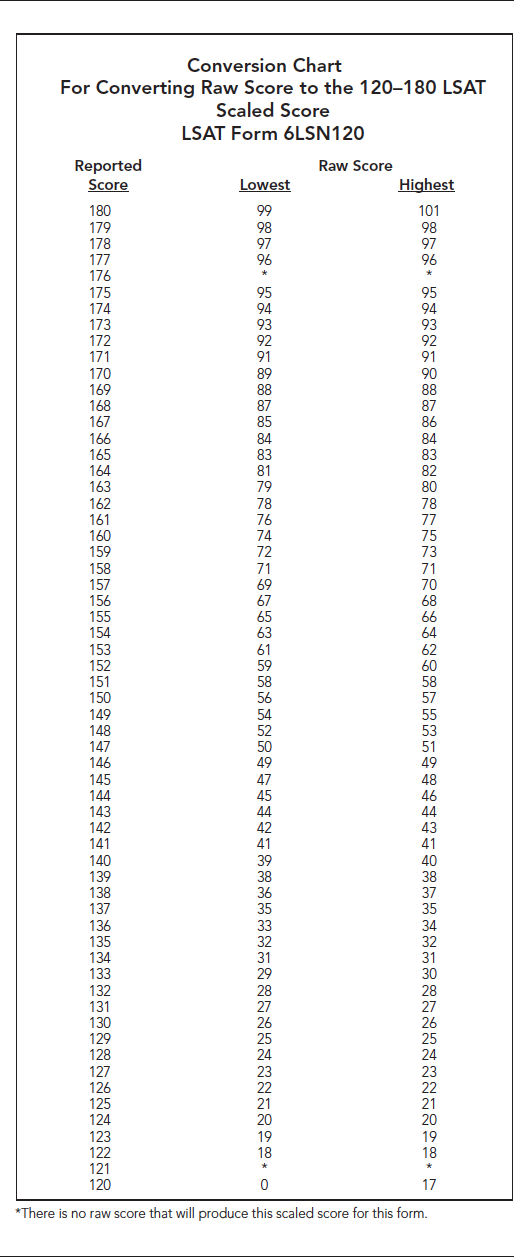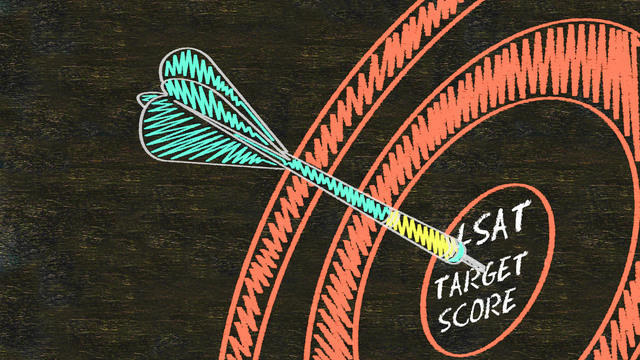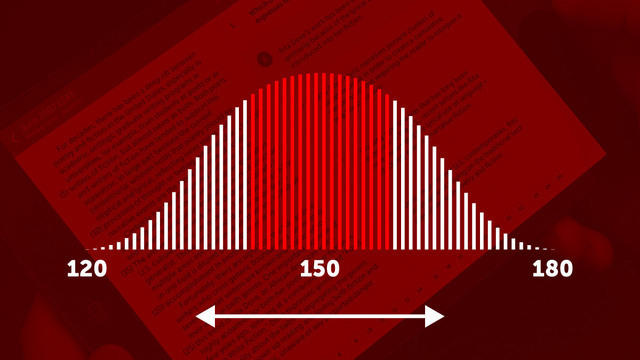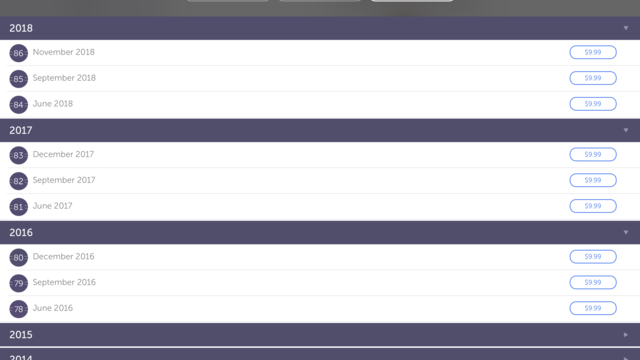Given that achieving the highest LSAT score possible is every pre-law student's goal, we thought it would be wise to take a moment to understand exactly how the LSAT is scored.
No Penalty for Incorrect Answers
Every LSAT contains either 100 or 101 questions—unless questions are removed from scoring—and your LSAT score is entirely based on the total number of questions you answer correctly.
Unlike other standardized exams, there is no penalty for incorrect answers on the LSAT so your goal is to finish every section with the highest possible number of correct responses.
Your total number of correct LSAT questions is commonly referred to as your LSAT raw score, which is then used to arrive at your LSAT scaled score.
The LSAT Score Conversion Chart
Every LSAT has a unique Score Conversion Chart that is used to convert your LSAT raw score into your LSAT scaled score. The reason for these unique conversion charts is that LSATs can vary based on the difficulty of the questions that appear. To account for these variances in difficulty, LSAC adjusts the Score Conversion Chart in an effort to normalize LSAT scores from different LSAT administrations.
Since LSAT scores are valid for five years, a law school admissions committee will undoubtedly encounter applicants with LSAT scores from different LSAT administrations. By adjusting the scales based on difficulty, LSAC allows law school admissions committees to compare applicants' scaled scores, without having to consider which LSAT administration they came from.
Since June 1991, the history of the modern LSAT, LSAC has used a scaled score range of 120-180, with 120 being the lowest possible score—i.e. you showed up but only filled in your name correctly—and 180 being the highest possible score—i.e. you were perfect or extremely close to perfect.
In addition to your raw LSAT score and your scaled LSAT score, you will also receive your score band and your percentile rank but we will discuss these in subsequent posts.
For now, let's take a closer look at the conversion chart for the September 2016 LSAT that was just released today:

At the top, you will notice that a raw score of 99, 100 or 101 all convert into a scaled score of 180 on this LSAT. At the bottom of the 170-range, a raw score of 89 or 90 converts into a scaled score of 170.
Dropping down a bit more, notice that a raw score of 74 or 75 would convert into a scaled score of a 160, which should be everyone's minimum target LSAT score. This scaled score means that you missed 26 or 27 questions on the exam, an average of almost 7 incorrect per section.
This is an attainable goal for all LSAT students. And remember, even if you do not need a 160 to gain admission to your target law schools, doing as well as you can on the LSAT will only increase your chances at merit based aid.
Because while there is absolutely nothing wrong with attending lower-ranked law schools, there is something wrong with taking out $180K in debt to pay for a law school education that will not give you the job prospects after graduation to repay this debt burden.
So if you are serious about law school, your goal is quite simple—getting the highest possible score on the LSAT.
Take your LSAT prep seriously and put in the time. Practice with proven strategies makes perfect. But don't take our word for it.










